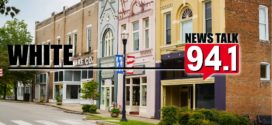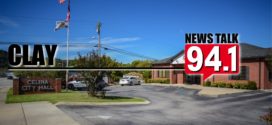In an effort to improve traffic flow, Cookeville officials want to conduct a pilot program with a new traffic light synchronization technology.
The product uses sensors and beams on traffic lights instead of the old technology placed in roadways. Public Works Director Blake Mayo said the sensors can be mounted on stoplights in minutes. In addition, the settings can be tweaked to maximize the traffic flow.
“You can change the zones and queue areas and that kind of thing like that,” Mayo said. “Make it more a lot more dynamic rather than just having the loop in there and the loop is what it is. We can change all these things around to help get coherent queues and things like that. I also looked at another sensor that did like a long beam, 900 feet long, and that was to help with some of these approaches with a little bit of higher speeds.”
Mayo said the longer beams can help control higher-speed roadways, such as Highway 111, and help with the yellow-red light time lengths. That can help reduce accidents.
The system is not real-time, though Mayo said he believes that is coming. The technology is also not cheap. Mayo said it costs roughly $25,000 per intersection. City Manager James Mills said the city would prepare a contract with Wavetronix, the vendor, to begin a pilot study.
Atlanta uses the system to not only impact traffic at individual intersections but to better synchronize traffic flow across multiple intersections on the same road. Closer to home, Lebanon has implemented the technology at six intersections, with plans to go to 38.
Mayo cautioned the system cannot fix all the issues, noting South Jefferson Avenue at I-40, where the traffic flow is impacted by short que distances between traffic lights.
Mayo said one of the few issues with the product is lightning. He said a card can be placed in the back to help prevent issues. The system also helps cut down the replacement of in-road traffic loops which trigger signals.
“With all the repaving that we do, having to put the loops back in is a nightmare and they also go bad over time,” Mayo said. “So we put them up lickety split.”
Mills said the system offers another way to improve congestion without building more roads or more lanes.
 News Talk 94.1/AM 1600 Where The Upper Cumberland Talks
News Talk 94.1/AM 1600 Where The Upper Cumberland Talks







